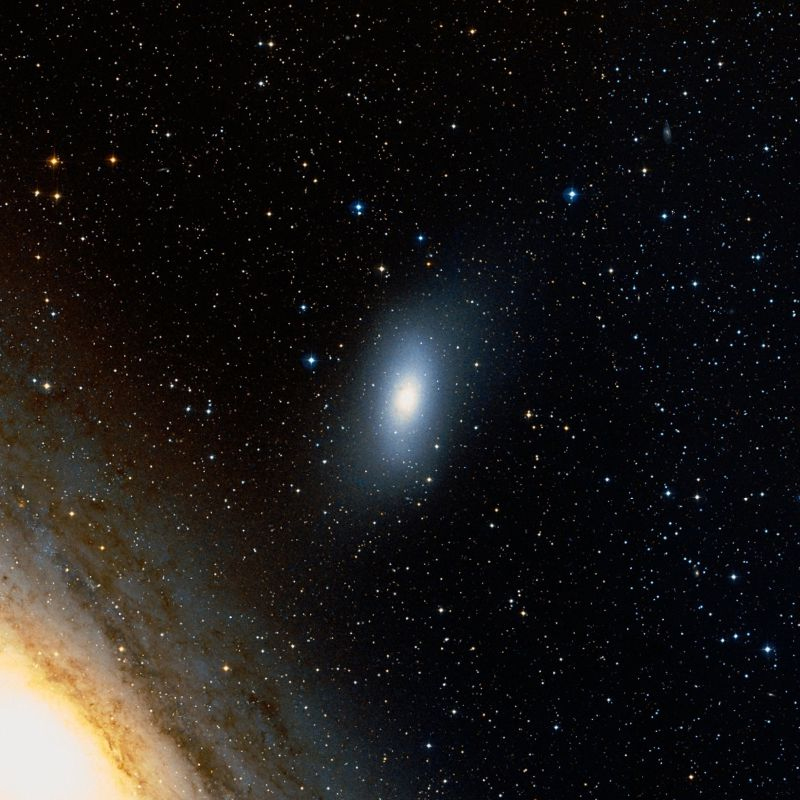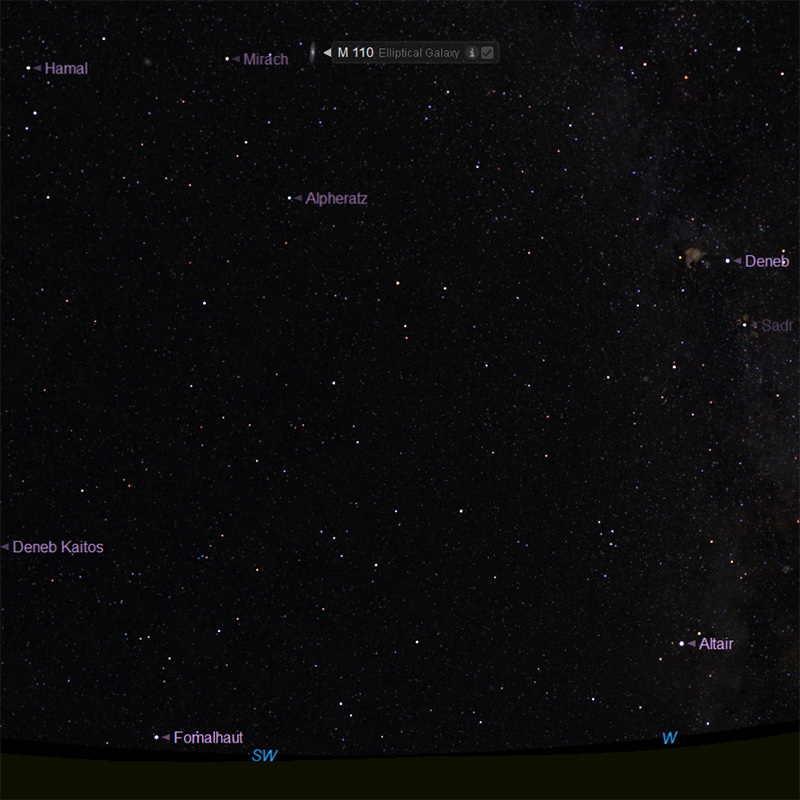M110

Credits: Wikisky
ocated in the constellation Andromeda, M110 was discovered in 1773 by Charles Messier.
It is a satellite galaxy of the Andromeda galaxy (M31) and a member of the Local Group,
which is made up of the galaxies located closest to the Milky Way (our Milky Way is considered a member of the Local Group as well).
M110 is approximately 2,690,000 light-years away from Earth and has a magnitude of 8.
Messier 110 shows evidence of recent star forming activity as it contains a population of young blue stars at its centre.
It also has some dust, which is unusual for a galaxy of this type and likely a result of interaction with its large neighbour, M31.
M110 is classified as a peculiar elliptical galaxy because of its unusual dark structures and signs of recent star formation.
The galaxy does not appear to have a supermassive black hole at its centre.
As a satellite galaxy of M31, M110 is a member of the Local Group.
It is one of at least 14 dwarf galaxies orbiting Andromeda, and the second brightest of Andromeda’s satellites, after Le Gentil (M32).
Messier 110 is often catalogued as a dwarf spheroidal galaxy, which makes it the only galaxy of this type listed in the Messier Catalogue.
It is, however, much brighter than other galaxies of this kind and is sometimes classified simply as a spheroidal galaxy. M110 has an estimated mass of between 4 and 15 billion solar masses.
Messier 110 is estimated to contain about 10 billion stars and has a population of at least eight globular clusters.
Facts about M110 by Keith Turnecliff
Charles Messier never added M110 to his catalogue, but he depicted both this object and M32 on a drawing of M31, the “Great Andromeda Nebula.” He first observed M110 on August 10, 1773.
The suggestion to assign the galaxy a Messier number was made by Kenneth Glyn Jones in 1967, making it the last member of the Messier List.
With a telescope, M110 is fairly easy to spot near the core of the much larger and brighter Andromeda galaxy.
Smaller telescopes will only reveal a faint, diffuse patch of light, while larger telescopes will unveil an oval shape with a brighter core.
The best time to view M110 is during November.

Credits: Image courtesy of Starry Night Pro Plus 8, researched and implemented by Keith Turnecliff.